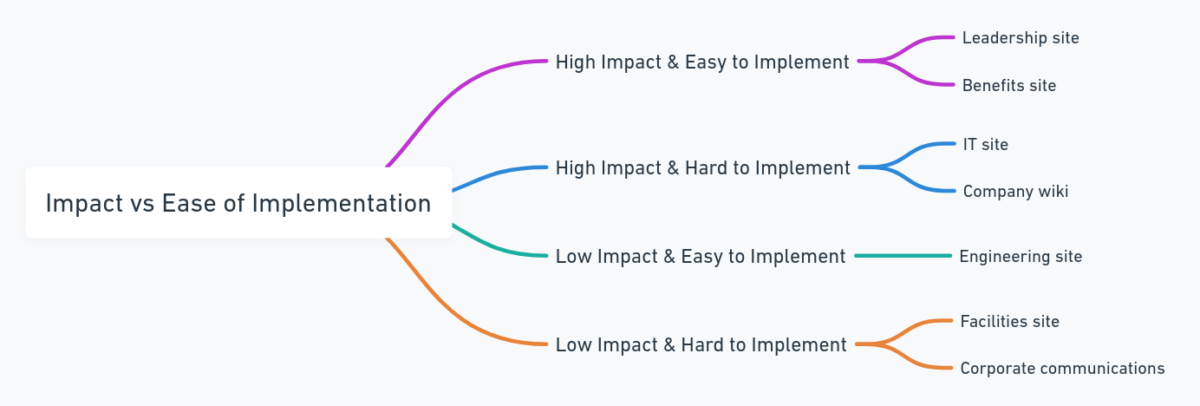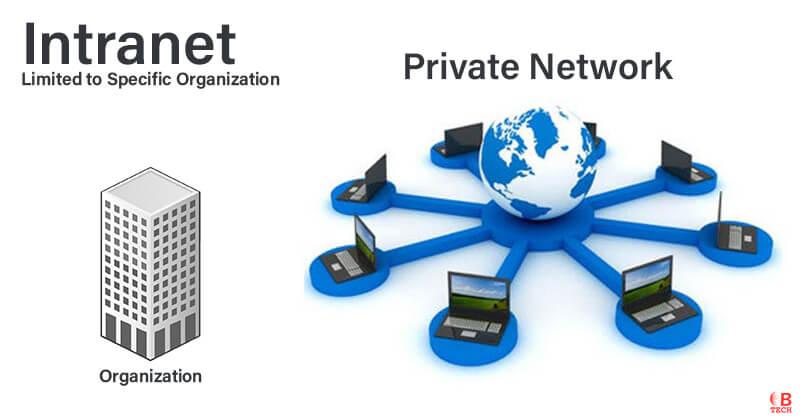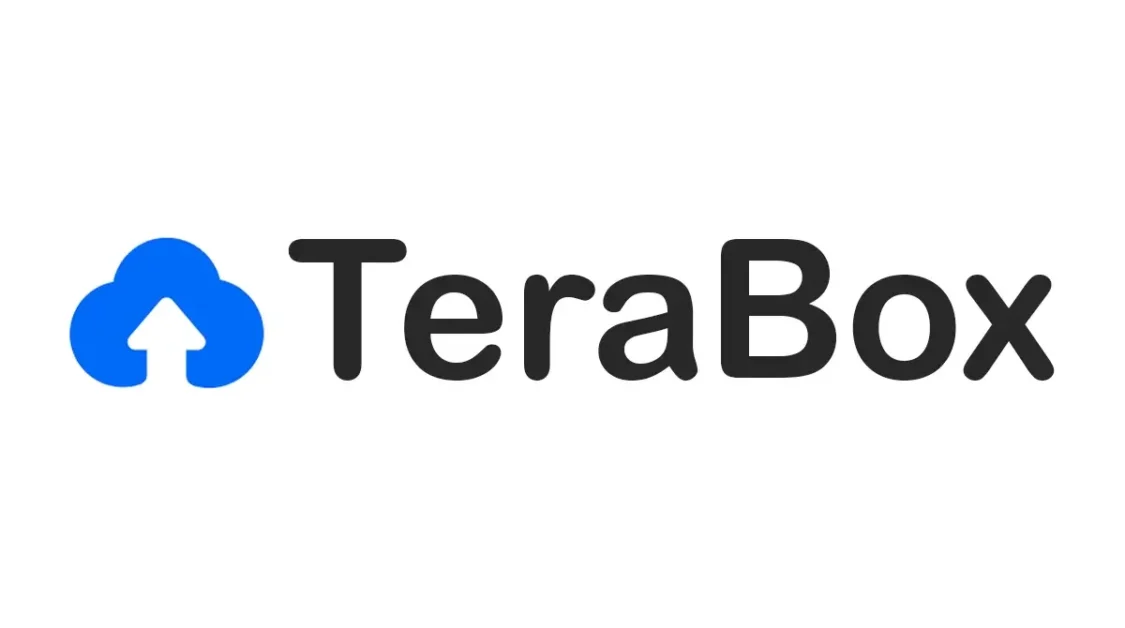Microsoft SharePoint provides a range of tools and options to help you build an intranet for your organization. Transitioning your intranet to SharePoint in Microsoft 365 can take some time especially if you have a lot of existing content. This guide focuses on how to create a new SharePoint intranet aiming to get your sites up and running quickly and maximizing your investment.
We’ll cover the following steps:
- Identify Your Main Organizational Goals
- Know Your Audience
- Plan for Governance
- Review Your Current Intranet
- Identify and Prioritize Business Needs
- Choose a Key Scenario for a Pilot
- Launch the Pilot and Get User Feedback
What Can You Do with SharePoint?
With SharePoint, anyone can quickly create functional and visually appealing intranet pages without needing to write code or make complex customizations. These sites look great on any device, offering an engaging experience for your users.
If you’re using SharePoint Server for your intranet you’ll find that SharePoint in Microsoft 365 is much easier to use. It allows you to create responsive, dynamic pages effortlessly, reducing the need for IT to build and maintain custom solutions.
Getting Started with SharePoint
To get an idea of what you can create with SharePoint, we suggest checking out the SharePoint look book. It offers various examples of how you can include news, events, resources and personalized content in your SharePoint sites (sites that anyone can easily create and manage).
Understanding Current Business Goals and Key Stakeholders
The most effective intranets do more than just look good—they’re designed to help people get work done and boost engagement. While the look book can give you ideas for how your content might look it’s essential to understand your business goals to determine what content and features are most important for your users and organization.

Every organization has key strategic goals that guide decisions and investments. To ensure your intranet is successful and receives the necessary support, it must align with these goals. You can also use these goals to prioritize your intranet projects. Unlike other tech projects, an intranet is never truly “finished” because your organization’s priorities and needs will change over time. However, at any given moment focus on the intranet initiatives that align most closely with your stakeholders and organization’s key priorities.
Additionally, review recent employee satisfaction survey data. This can give you insights into the information and tools your employees need by highlighting any pain points they’ve identified.
Understanding Audience
When planning your new intranet, it’s helpful to envision what it will be like once it’s up and running. What will people be able to do? How will they start their day? What will they say about the intranet? A useful exercise to set the overall goals for the intranet is to involve your key stakeholders in a “cover story” activity. This imaginative exercise involves picturing an ideal future where your intranet is featured on a magazine cover, complete with headlines, sidebars and quotes from users.
With this vision in mind, it can also be valuable to create personas for your key users. A persona is a fictional but realistic profile of a typical intranet user such as a new employee, knowledge worker, field worker, sales representative, manager or content creator. To build accurate personas, you’ll need to research and engage with individuals who represent these different roles to understand their information needs. You can’t design an effective intranet without understanding the people you’re creating it for. It’s not enough to rely on site owners’ input—they know what they want to publish but that doesn’t always align with what users want to access.
Consider Governance
If users complain that search results are cluttered with irrelevant content this might point to a governance issue. Before diving into your new intranet project, take some time to plan how you’ll manage the architecture and content. Making these decisions early on will make them easier to implement and maintain. Here are some things to consider:
- Site Provisioning: Who can create new sites? Once a site is created, how will it be made easily discoverable through navigation or as a key search bookmark?
- Consistency: Should all sites follow a similar design to help users easily find important content as they navigate between sites?
- Accountability: Who is responsible for the content on each site? How often should content be reviewed?
- Content Management: Is content management part of the performance goals or job descriptions for those with editing or ownership permissions?
- Content Retention: Does intranet content need to be kept according to your retention policies or classified based on its sensitivity?
You don’t need to finalize every governance decision at the start but without a plan for managing your new intranet, it could quickly become a cluttered space that doesn’t meet your important business objectives.
Review Your Existing Intranet
Your current intranet might include sites from various business groups like HR, IT, Facilities, Engineering and more. As you plan your new SharePoint intranet, start by taking an inventory of your existing sites. Meet with the site owners to understand their goals for the new sites. Assess where your content is currently stored and how much of it you’ll need to move to the new intranet.
Check whether your content is up-to-date or needs to be refreshed before transitioning to a new site. In some cases, it might be better to leave old content behind and create new, optimized content for the modern SharePoint experience rather than migrating outdated material to the new intranet.
During these meetings you can determine the business needs each existing site addresses and gather any new requirements for future sites.
Besides talking to current site owners it’s a good idea to bring together a focus group of new employees. Since new employees are a key audience for the intranet those who have joined in the past two to three months can offer valuable feedback on what’s missing or difficult to find in the current intranet as well as resources they wish they had when they started. They might also share useful ideas from their previous workplaces that could inspire new features and improvements.
Consider this step as a chance to learn. You’re gaining insights into what matters to your users and the business which will help you identify important initiatives for your intranet.
Identifying Key Initiatives
Using the insights you gathered during your research, collaborate with your main intranet stakeholders to identify initiatives that align with your organization’s priorities. Also, consider any challenges that might arise when implementing them.
While you may eventually address all the identified initiatives, prioritizing which project to start with will help you achieve early success and engage users quickly.
Evaluate each initiative based on the following criteria:
- Does it solve a real problem?
- How many people will benefit from it?
- Can it be completed within a reasonable time frame?
- What’s the expected return on investment?
Assess each initiative for its potential positive impact on users and the ease of implementation. A high-impact initiative that requires minimal customization could be an excellent choice for your first project.
Consider organizing your business initiatives on a grid and reviewing them with your intranet stakeholders and IT department to select the best one to begin with.
To determine which initiative to focus on first, collaborate with the business leaders in that area. Together, define the objectives for the solution, identify who will be responsible for ensuring its success and establish the metrics you’ll use to measure success.
Selecting Pilot Scenarios
Work with the owner of each scenario to define what their ideal solution would look like by considering the following:
- Who are your site visitors?
- What do they want to achieve or learn when they visit?
- What tools or technology are they currently using?
- What information do you want to highlight or promote?
- What tools or technology do you want them to use to complete their tasks?
- Who are the champions that will guide them in transitioning to the new site or solution?
- How will you measure the success of the solution?
Selecting Solution Components
SharePoint provides various tools to help you build your intranet:
- Communication Sites: Share news, reports, statuses and more using templates and web parts.
- Home Site: Set as the main landing page for your organization’s intranet.
- Hub Sites: Organize related sites & teams,centralize news, search & content management.
- SharePoint News: Use the news web part to post stories, announcements, status updates and more with rich formatting and graphics.
- Viva Engage: Connect with people across your organization beyond specific projects or departments.
- Dynamics 365 Customer Voice: Create custom quizzes, surveys, questionnaires and registrations.
- Stream: Deliver live and on-demand meetings, events and training.
For the scenario you’ve chosen to develop, select the components that align with the site’s business goals. We suggest creating a quick prototype and giving your key stakeholders access to it. This offers a concrete framework for further discussions and design tweaks.

At this point, involve your help desk to prepare them for questions when the site is rolled out to a larger audience.
Rolling Out the Pilot
Once your prototype is ready to be shared more widely you can roll it out to a pilot group or even the entire organization. User adoption is crucial for the success of a new intranet site. To encourage usage, consider both a top-down and bottom-up approach:
- Executive Support: Recruit executive sponsors who can secure funding for the intranet project and communicate its importance to the rest of the organization.
- Grassroots Promotion: Empower champions within the organization to promote the new site at a grassroots level.
Additional steps to ensure success include:
- Hosting launch events and communication campaigns.
- Providing formal training sessions.
- Holding regular office hours where users can ask questions.
As the site gains more users, monitor your success metrics and make adjustments to boost engagement and satisfaction.
Once the site is on the path to success, reflect on any lessons learned and move on to the next intranet project you wish to undertake.



